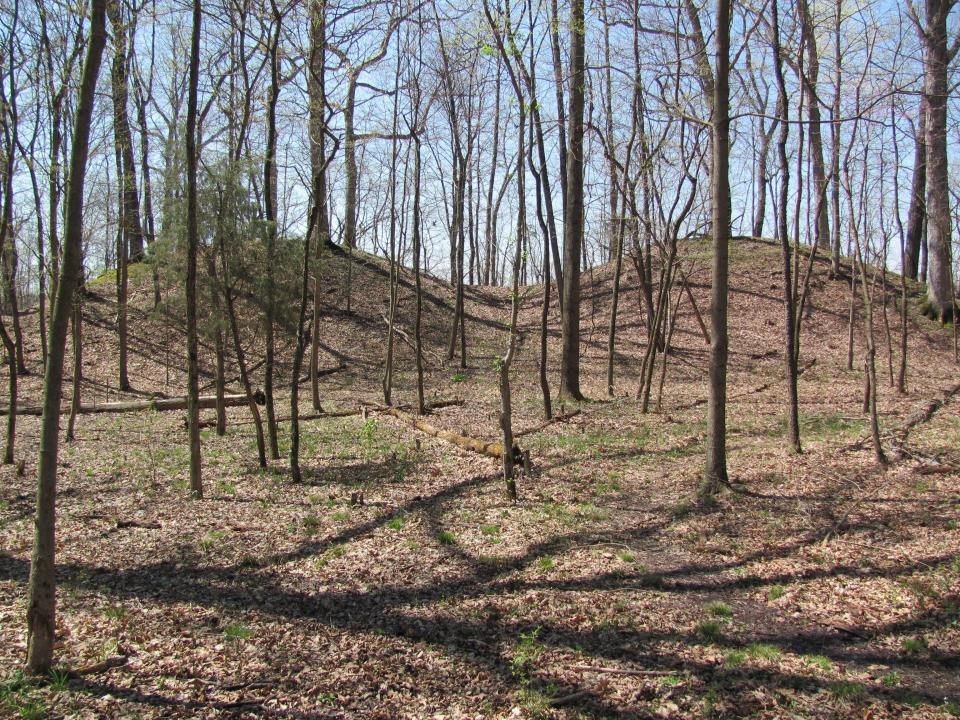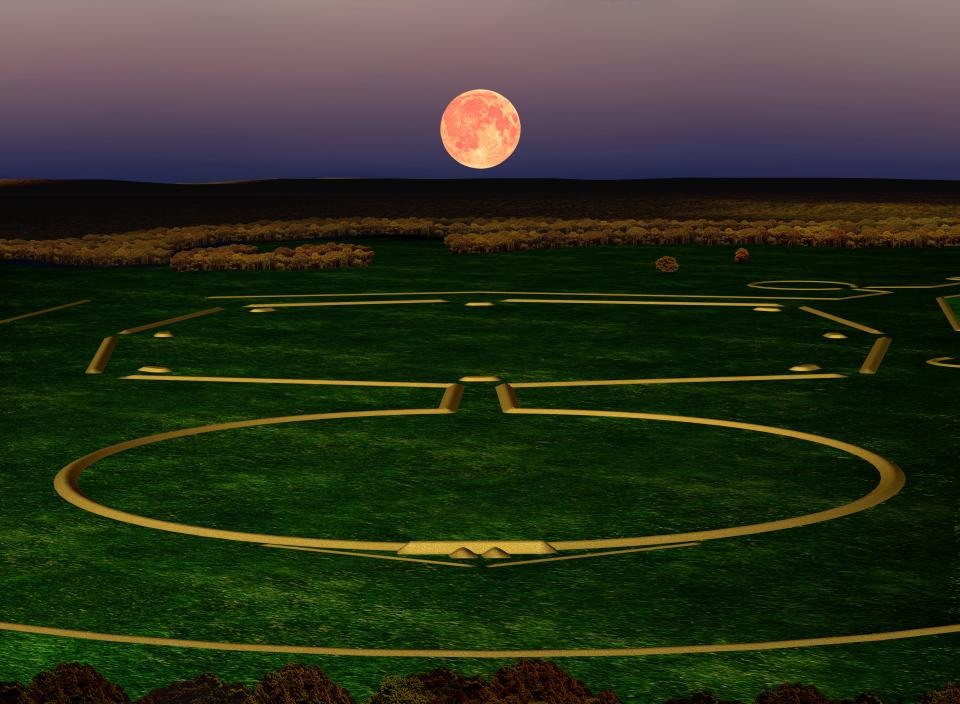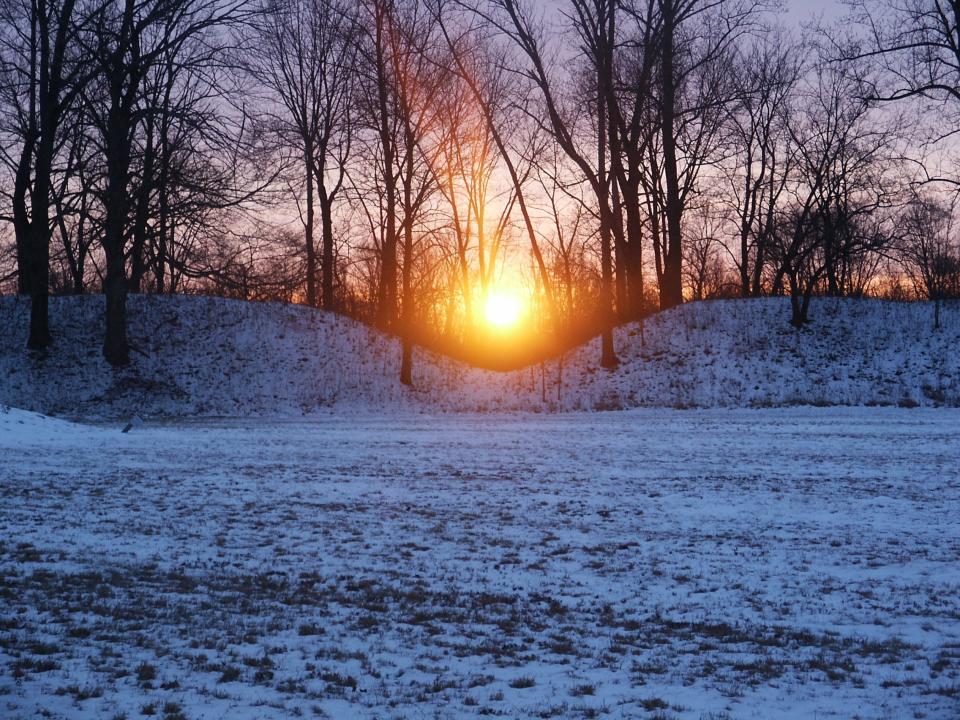Ohio earthworks join World Heritage list that includes the Taj Mahal, Stonehenge
A network of ancient American Indian ceremonial and burial mounds in Ohio described as "part cathedral, part cemetery and part astronomical observatory" was added Tuesday to the list of UNESCO World Heritage sites.
The network of sites includes Fort Ancient State Memorial in Oregonia in Warren County.
Preservationists, led by the Ohio History Connection, and indigenous tribes, many with ancestral ties to the state, pushed to recognize the Hopewell Ceremonial Earthworks for their good condition, distinct style and cultural significance − describing them as "masterpieces of human genius."

UNESCO's World Heritage Committee approved the application during a meeting in Saudi Arabia. The massive earthworks join a list of famed sites that includes Greece's Acropolis, Peru's Machu Picchu and the Great Wall of China.
Constructed by American Indians between 2,000 and 1,600 years ago along central tributaries of the Ohio River, the earthworks were host to ceremonies that drew people from across the continent, based on archeological discoveries of raw materials brought from as far as the Rocky Mountains.
Elaborate ceremonialism linked to "the order and rhythms of the cosmos" is evident in the "beautiful ritual objects, spectacular offerings of religious icons and regalia" found at the sites, the application said. It said the mounds were "part cathedral, part cemetery and part astronomical observatory."

The eight sites comprising the earthworks are spread across 90 miles of what is present-day southern Ohio. They are noteworthy for their enormous scale, geometric precision and astronomical breadth and accuracy, such as encoding all eight lunar standstills over an 18.6-year cycle.
UNESCO Director-General Audrey Azoulay said the earthworks' inclusion on the heritage list "will make this important part of American history known around the world."
"Just three months after rejoining UNESCO, the United States has its twenty-fifth site inscribed on the World Heritage List, which illustrates the richness and diversity of the country's cultural and natural heritage," she said.
This inscription on the World Heritage List highlights the important work of American archaeologists, who discovered here remains dating back 2000 years, constituting one of the largest earthwork constructions in the world."
Among tribes that supported the UNESCO designation were the National Congress of American Indians, the Inter-Tribal Council representing tribes living in Northeast Oklahoma and the Seneca Nation of New York State.
The application was slowed by a protracted court battle to restore public access to a portion of the land that had been leased to Moundbuilders Country Club for a golf course. A ruling of the Ohio Supreme Court in December allowed Ohio History Connection, the state's historical society, to proceed with efforts to gain control of the Octagon Earthworks, part of the Newark Earthworks complex.

The earthworks in Warren County, which is now in part of a state park, is the largest hilltop enclosure in North America.
Sitting above the Little Miami River, much of the space is enclosed by earthen embankments constructed from one basketful of earth at a time, according to Ohio History Connection. Some of the embankments reach heights of 23 feet.
"American Indians and archaeologists today believe Fort Ancient more likely served as a community gathering place for ceremonies and more," the Ohio Connection website states. "The space more than likely hosted ancient American Indians from across the continent, as evidenced by finely crafted ceremonial objects made of materials from far away, such as silver from Canada or obsidian from Wyoming."
Other sites included under the new designation are Hopewell Culture National Historical Park, Mound City Group, Hopewell Mound Group, Seip Earthworks, High Bank Earthworks and Hopeton Earthworks.
The Enquirer contributed.
This article originally appeared on Cincinnati Enquirer: Ohio's Hopewell Ceremonial Earthworks now a UNESCO World Heritage site

